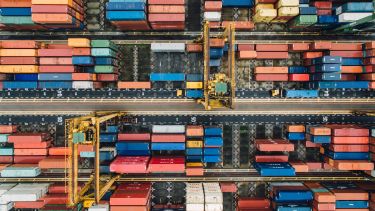The year 2020 marked the start of a challenge to humankind. The world witnessed the discovery of a new virus – Covid-19. The first epicentre of Covid-19 was in Wuhan, Hubei province, China; the second epicentre was Europe; and the third epicentre is now in the USA. The global economy is currently in a ‘lockdown’ because of this coronavirus pandemic.
Our global supply chains have been disrupted as a result of the immense pressure, and are therefore undergoing a major revolution. Countries across the world have responded with a range of strategies and actions, tailored to their needs and circumstances. These include injecting trillions of dollars to the market to save the economy and save lives, mobilising resources, readapting supply chains and technology, stockpiling critical raw materials and products, accelerating research and innovation (e.g. vaccines and ventilators), maximising data sharing and openness and increasing acceptance of digital technology.
The ability of a country to bounce back quickly from Covid-19 will depend on the efficiency of its supply chain resources, including finances, physical resources, infrastructure, workers, data, materials, natural resources, and its ability to be interconnected.
It is not just supply chains that compete, but also the strengths of their resource capital and sustainability. The shortages we are currently facing as a result of increased demand from Covid-19 are caused by the fragmentation of resources, inefficient resources management, and a lack of resilience within supply chains. Supply chain resources can be categorised into environmental, economic, and social capital resources. By capturing and quantifying these different types of capital streams for critical production cycles, we can measure and manage the sustainability of supply chain resources more efficiently. Doing so would mean two countries could strike a deal to share resources, enabling both to strengthen each other’s supply chains.
The way organisations and nations have converged their resources, capacities, capabilities and supply chains to address the Covid-19 challenges proves that a new interconnectedness is possible. Identifying and managing the interconnectedness and overlaps that occur in resource cycles will help us optimise the overall sustainability of supply chain resources for specific product and service supply chains now and in the future.
There are several examples of this interconnected supply chain happening already. The production of the urgently-needed ventilators to save lives is a case in point, thanks to the Ventilators Consortium in the UK including Rolls-Royce, Airbus, F1 etc. and the major industry-led and federal government-led effort in the USA including Ford and General Motors. We’ve also seen the construction of temporary hospitals in just 10 days at places like the ExCel conference centre in London, with NHS staff, construction workers, military engineers, logistics and transport firms and volunteers all working together. Also, the fast mobilisation of doctors and nurses and personal protection equipment (PPE) between cities to the epicentre in China is an example, as well as the enforcement of the national level ‘lockdown’. These cases demonstrate how resource efficiency and supply chain resource sustainability can work in the real world.
Economists have predicted that Covid-19’s impact on the global economy will be 10 times bigger than the 2008 financial crisis. The World Economic Forum has compared the global impact of Covid-19 to a worldwide depression (not just a recession). However, some economists predict that the global economy will bounce back in the fourth quarter of 2020, recovering from the current nosedive of stock markets. If China’s growth is 6 per cent, as predicted for 2020, then the global market won’t be quite so bad. The new world needs to prepare for the recovery from this global slowdown by accelerating the expansion of international supply chains - but with the requirement to grow within environmental limits.
It is absolutely key that all policymakers and industries globally collaborate to see the role of resource efficiency and supply chain sustainability embedded in everything we do. A world where decisions are made with this in mind, improving supply chain resource forecasting, utilisation, and conflict resolution decisions, would contribute towards translating wide-ranging sustainability targets into specific production and operations objectives. More of these new supply chains will emerge from Covid-19 with win-win-win characteristics for the economy, environment and society as a whole.

